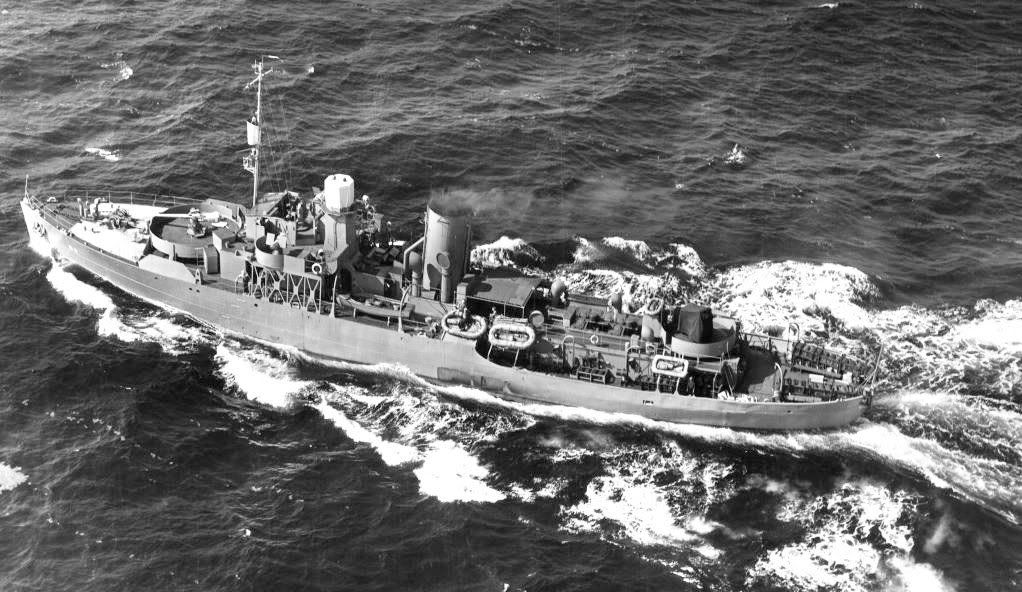Ed,
Thanks very much for your reply. It really makes sense.
I was influenced to render the model in measure 16 by information in the Flower Class web site. http://www.cbrnp.com/RNP/Flower/ARTICLES/USN_Flowers.htm
Bob Pearson's rendering of the vessel in May of 1942 has the paint scheme in measure 16 and cites Lynch's book, Canada's Flowers as the source. But this does not make sense. Ed, your question as to where did they even get the paint is a good one. I'm sure they did not have the special tint required for Thayer blue on hand a month before the measure 16 specifications were even published. http://www.shipcamouflage.com/ships2_6_42_paints.htm#Color.
The photo is the only one I have seen in this time period even though I have heard that there are others out there. I also believe the occasion is the acceptance cruise after the turn over to the US. I think there are civilians aboard, probably from the ship yard. The figure on the foredeck looks to me like a civilian in a trench coat and fedora hat. The men in the carley float look as if they are checking it out.
I also think that this photo may have been the basis for Pearson's rendering and for Revell's instructions. The reason I say that is the location of of the ensign on the flagstaff at the stern.
The ensign is only flown at that position when the vessel is not underway. Once it is underway, the ensign is flown from an inboard location. In this case, the appropriate place would have been the masthead.
So, the display of the ensign at the flagstaff at the stern is a departure from normal custom. It may be that the vessel had just gotten underway or that this was to be a quick turn around the harbour and the crew was to busy with other things to be concerned about the position of the flag. Either way, it seems that both Pearson and Revell have memorialized what amounts to be an error probably by referencing this photo. And I'm not trying to be critical. Both have done so much good to let a little thing like this detract from their works.
Oh well, I'v really departed from my central question. I'v already gone too far with rendering my model in measure 16 to go back now. But, I may do another one.
Ok, is there a MM color or other manufacturer that would come close to WA Blue? What color were the decks on UK Corvette's?
There is another genereal question regarding what I see as a contradiction. The US Flowers were under US Navy operational control but were manned and maintained by the Coast Guard. All of the applicable camouflage measures at that time required that the decks, including wood decks, be painted Deck Blue, 20-B. But now we have a photo of the USS Temptress taken on 9 Oct 1944 and is from NavSource.

Note that the wood foredeck is not painted. My question is why is the deck not painted in accordance with camouflage instructions? Did the Coast Guard have their own manual for painting vessels (and perhaps other things) which differed from the US Navy manual? If that is the case, then one can't impute Navy instructions/manuals to the Coast Guard.
It started out so easily. I found a good photo and a web site that said paint it measure 16. Out to the LHS store for the paint. Good. Job half done. Or so I thought. Then I started asking questions. Now I have more questions than answers.
I would really like to hear comments on this.